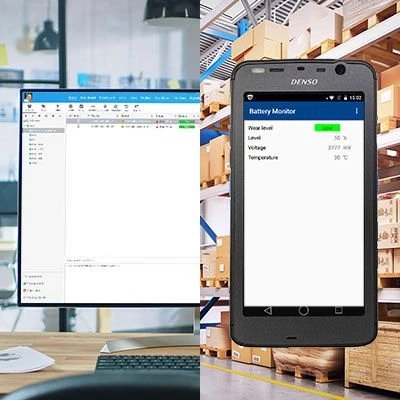MDM, EMM and UEM briefly explained

Where exactly are the differences?
MDM, EMM and UEM are the three most common terms you will come across when learning about mobile device management solutions. You may already be wondering what each term stands for and how they relate to each other. Read on for a brief answer to these questions.
Often the terms MDM, EMM and UEM are used interchangeably, but each term has a different meaning. It is important to understand that these terms have evolved over time. The term Mobile Device Management came first, followed by Enterprise Mobility Management and finally Unified Endpoint Management.
Mobile Device Management (MDM)
The term MDM is a holdover from a time when mobile phones did not interface with other devices in the office. As a result, IT teams focused on managing phones, separately from other devices. There was no way to ethically manage employees' personal devices, if they had any at all. Also, administrators at the time did not need ways to manage files and other content on the device, as this was almost non-existent on older phones.
Enterprise Mobility Management (EMM)
Enterprise Mobility Management (EMM) is the term used to describe the management of mobile devices and the applications and content on those devices. EMM includes mobile device management (MDM), mobile application management (MAM) and mobile content management (MCM). Importantly, EMM also provides the ability to manage both company-owned and employee-owned phones. Taken together, these developments help companies adapt to a highly mobile workforce.
Unified Endpoint Management (UEM)
The term 'unified endpoint management' (UEM) refers to the strategy of using a single management framework for all types of corporate endpoints or devices. This includes phones, tablets, computers, Internet-of-Things (IoT) devices and more across a range of operating systems. This is much more convenient than previous approaches and also much more powerful.
Any good modern MDM solution is actually a UEM solution. Leading MDM solutions all offer the ability to manage almost all office devices from a single console. What's more, these solutions can also manage the content on these devices. Major industry benchmarks such as the Gartner Magic Quadrant for UEM solutions have now adopted the term UEM instead of MDM or EMM.
MDM and EMM are still popular terms because they are widely known. Of course, there is always the possibility that MDM and EMM offerings have fewer features and are therefore not UEM solutions. You should always make sure that any MDM or EMM solution you find is indeed a UEM solution.
If you would like to learn more about deploying UEM in your organisation, we would be happy to advise you, from the initial considerations to the final implementation.



